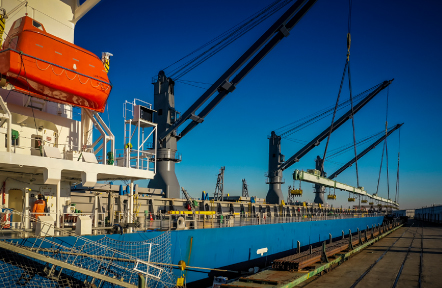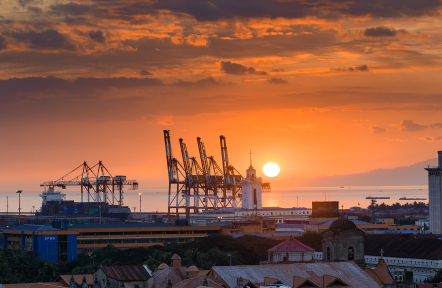While Canada traces back its commercial ties to Asia-Pacific to the late 19th century, the country’s commitment to the region has never been stronger, judging by the number of trade partnerships entered just in the last 25 years.
Participating already in the Asia Pacific Economic Cooperation (APEC) and in talks for the Trans-Pacific Partnership (TPP), Canada has signed separate sweeping free trade agreements with Japan, India and South Korea, as well as the Foreign Investment Protection Agreement (FIPA) with China.

“The priority now is to sustain the relationship with our Asian counterparts through a constant stream of communication and relationship building,” said Ontario Minister for Economic Development Brad Duguid.
Facilitating More Trade and Investment
According to the federal government’s “Global Markets Action Plan,” trade between Canada and the Asia-Pacific reached $156.9 billion last year, an increase of more than 30 percent over the past five years.
Then in March of this year, Canada opened North America’s first Chinese reminbi (RMB) clearing bank in the country’s financial capital, Toronto. As the only RMB hub in the Western Hemisphere, the institution represents another milestone in Canada’s ever-growing trade ties with China.
The agreement between Canada and China designated the Industrial and Commercial Bank of China Canada (ICBC Canada) as the RMB clearing bank, which will handle and settle transactions between Canadian and Chinese businesses without having to use an intermediary currency, usually the U.S. dollar.
This RMB clearing hub agreement – a welcome move as it eliminates one layer in foreign trade transactions – also establishes a reciprocal credit line between central banks and sets up an investor quota that allows access to Chinese capital markets.
“This absolutely has the potential for being a game-changer in terms of Canadian-Chinese trade. We want to minimize currency risks as much as possible. It simply makes it easier to do business,” said Toronto Financial Services Alliance President and CEO Janet Ecker, who played a major role in bringing the RMB initiative to reality.
As the second-largest financial center in North America by employment, Toronto recognizes the potential benefits of increased engagement with Asia.
“Asia, without a doubt, represents the largest opportunity for Toronto in the global marketplace,” stressed Toronto Mayor John Tory.

Beyond trade and finance, Canada and China have consolidated other connections as well. In May, Air Canada and Air China announced the launch of non-stop flights between Beijing and Montréal.
“A direct air route between Montréal and the Chinese capital is great news for the business community in Québec and Asia. (It) is a symbol of the strength of our growing relationship with Asia,” said Québec Premier Philippe Couillard.
“Bilateral trade between Québec and Asia is strong and shows the need for this direct air route. The total value of trade in Québec goods with Asia rose to $224.4 billion last year, an increase of 53 percent between 2005 and 2014. Québec’s exports to Asia grew more quickly during this period (more than 103 percent) than its imports (over 40 percent),” Couillard added.
Growth Thru Education and Innovation
As trade and investment remain important components of the relationship between Canada and Asia, education has become increasingly important as well.
Today, Asia-Pacific countries are among the ten biggest sources of foreign students in Canada: China (1st), India (2nd), Korea (3rd), and Japan (7th).
Perhaps, the attraction of Canada lies in the ethnic diversity found across the country, which many regard as one of the world’s most welcoming societies for immigrants.
As the number of partnerships between Canadian and Asian schools grows, so too does the collaboration between academics, researchers and innovators from both sides of the Pacific.
“The real end game [of collaboration] is the dialogue created between Asia and British Columbia. We want to open other doors that are maybe more lucrative in terms of returns for both sides: trade discussions, intellectual property opportunities, joint initiatives, education and health,” said British Columbia Institute of Technology (BCIT) Vice-President Academics Bill Dow.
“All these open doors. Most people in the world speak a common language around those cornerstones. So, if we open with that conversation, we are supporting a much bigger agenda. Education provides a great beachhead to create a very different conversation,” Dow added.
Meanwhile, the city of Mississauga in Ontario has capitalized on its reputation as an education and innovation center to attract investment from all corners of the globe.

For instance, Japan, Canada’s largest foreign direct investment partner in Asia, has over 300 Japanese subsidiaries in Canada, particularly in the automotive sector and many of which are based in Mississauga.
“Mississauga is home to 63 Fortune 500 companies, almost 60,000 businesses, and 1,400 multinational firms. Job creators choose Mississauga because of our highly educated workforce,” said Mississauga Mayor Bonnie Crombie.
Looking Ahead
As opportunities multiply in a wide range of sectors like finance, tourism, mining, energy (both nuclear and renewable), natural gas, green technology, aerospace, information technology, mergers and acquisitions, and forestry, there is much optimism and excitement going around the public sector and the business community in Canada and Asia.
Canada has barely scratched the surface of Asia’s business landscape; just as China is only discovering the immense investment environment in Canada.
With so much that they already offer each other, this trans-Pacific partnership has begun reaping its rewards.









